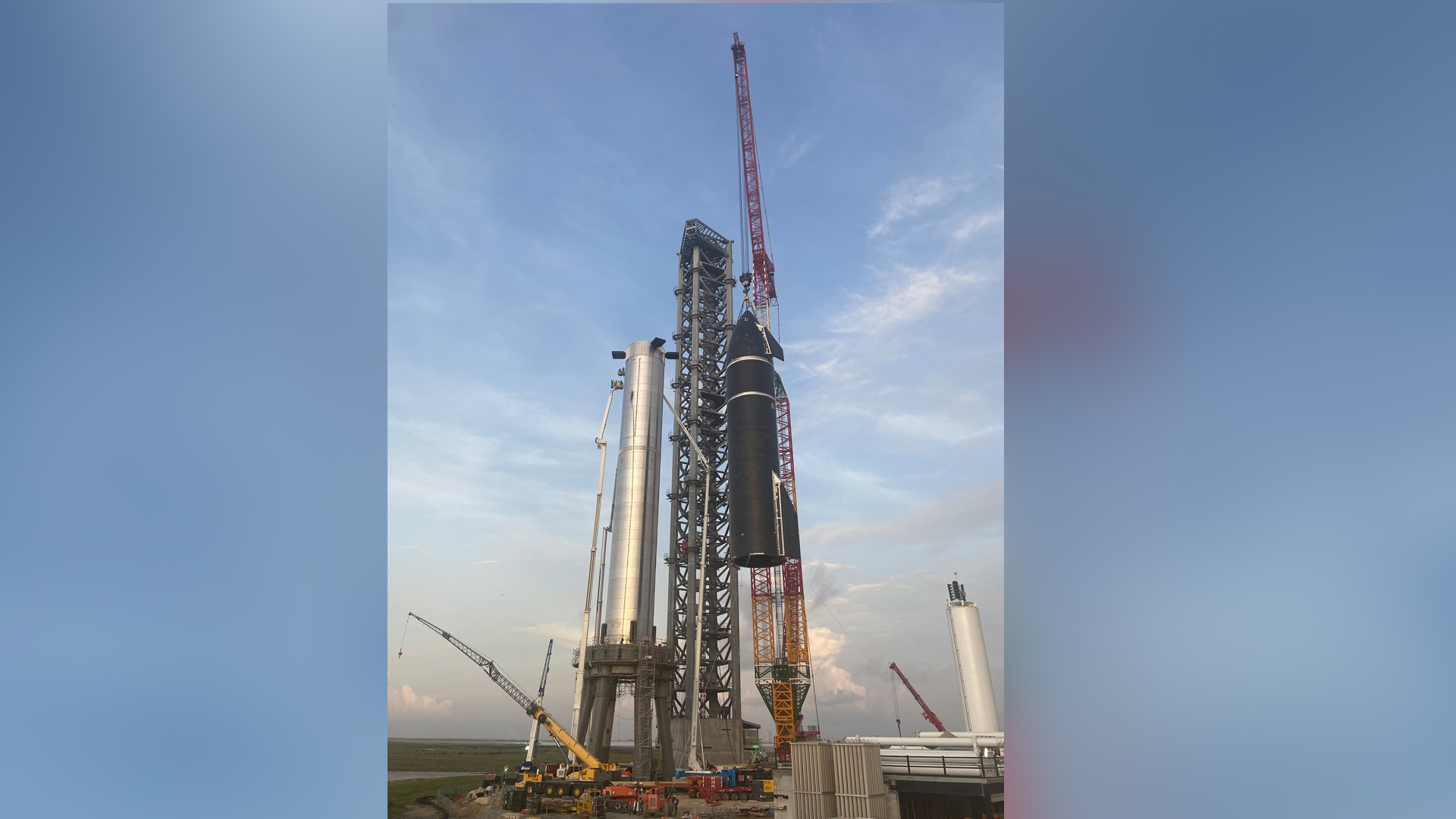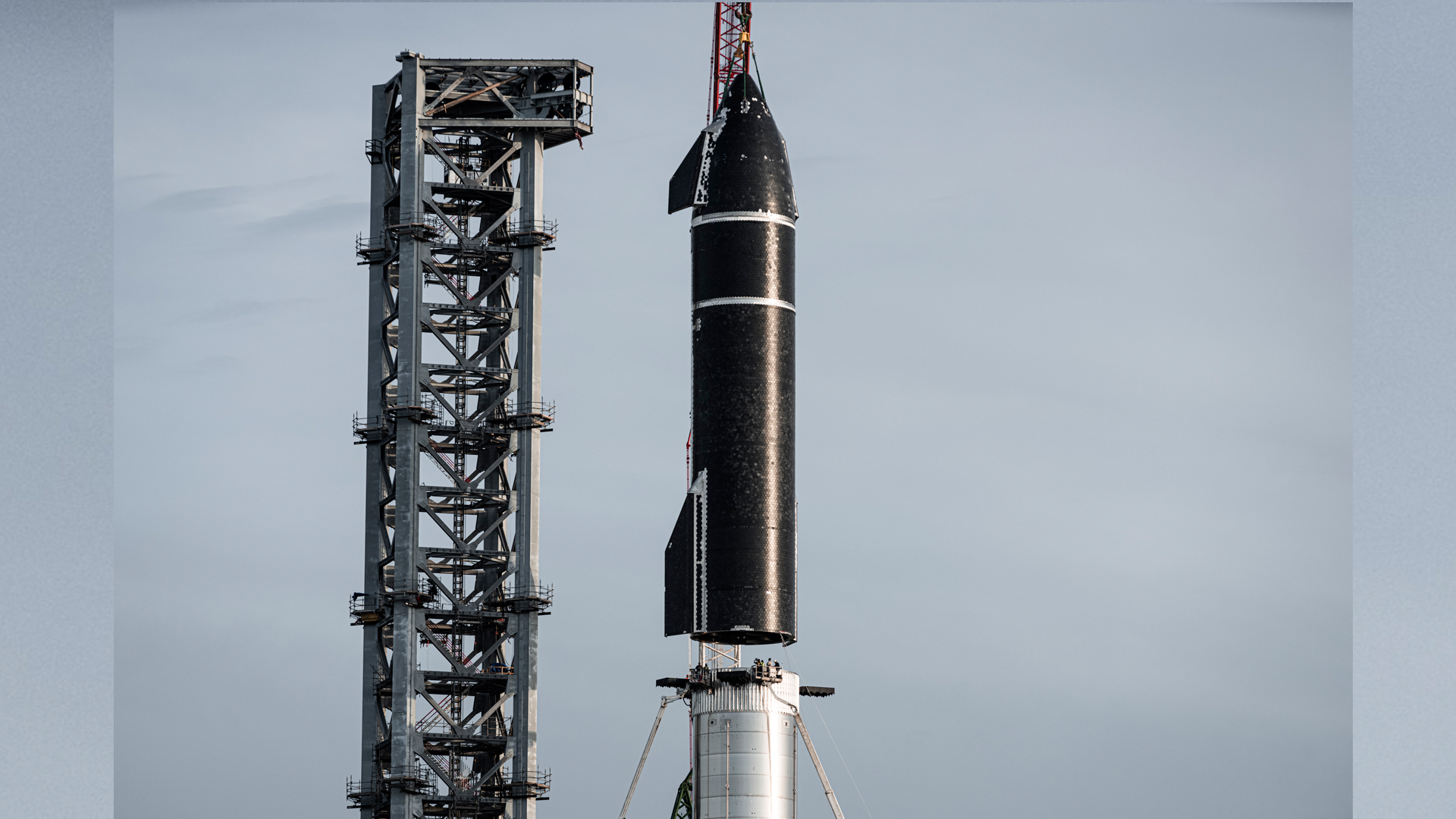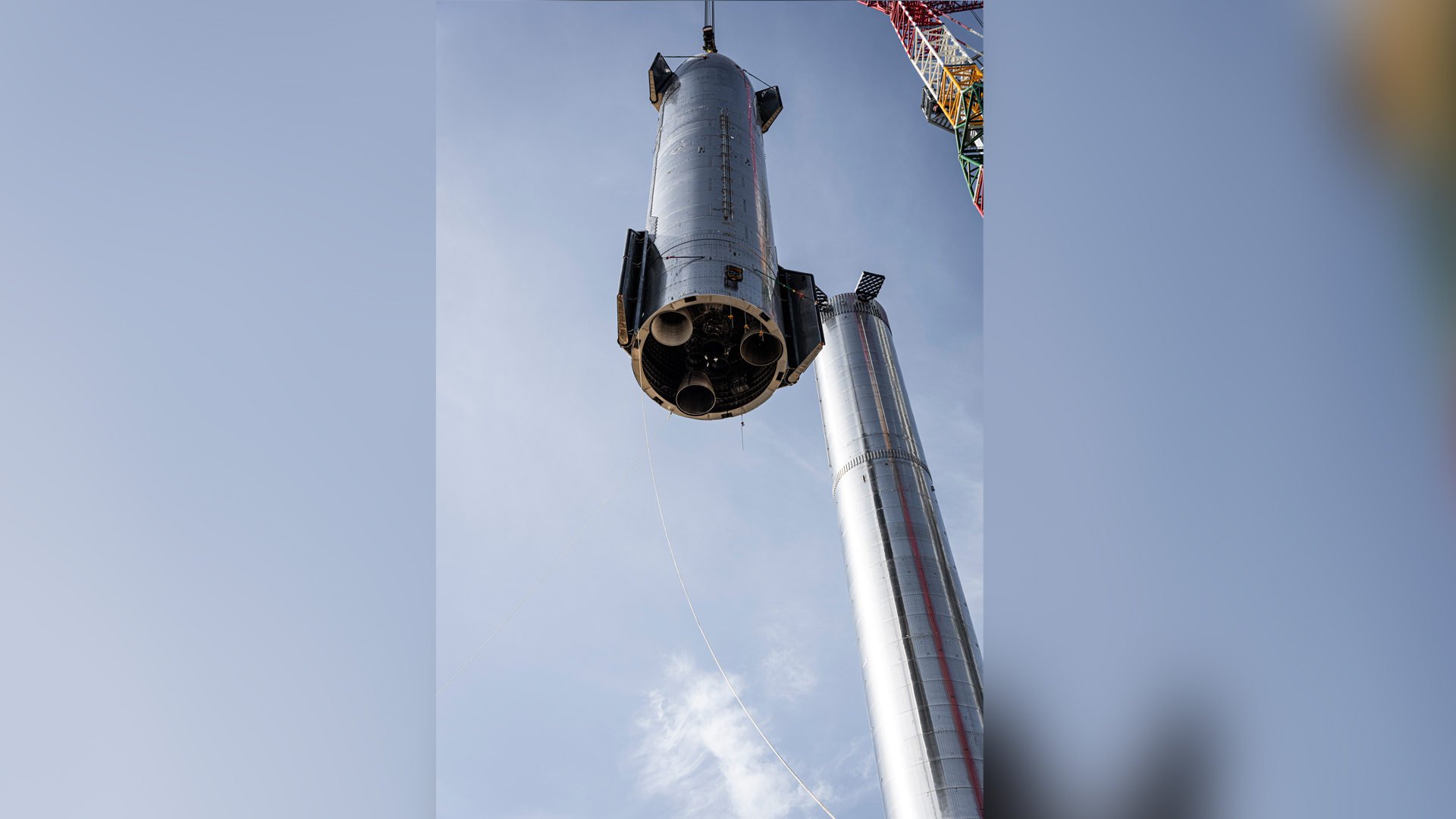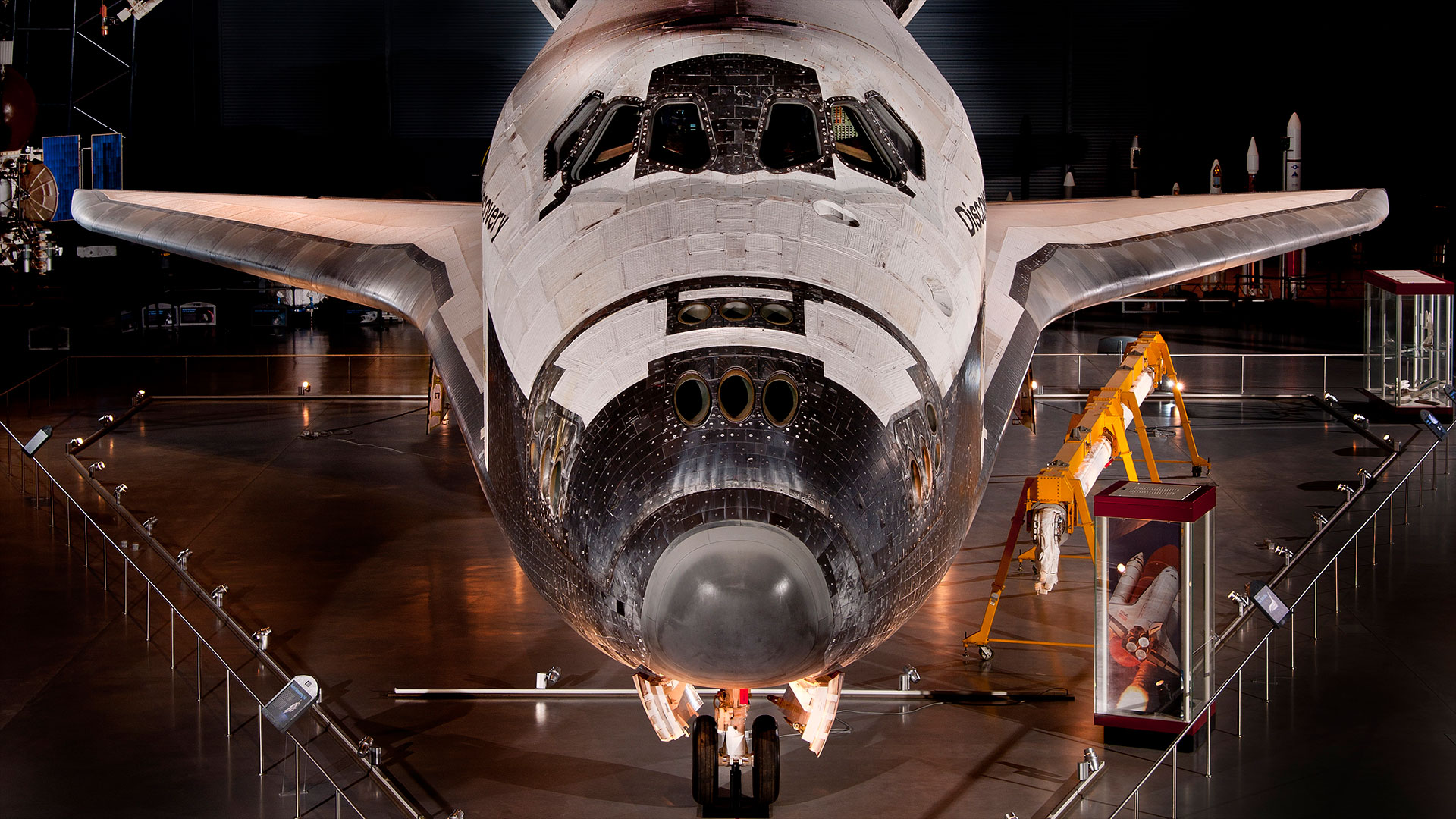SpaceX stacks Starship atop massive booster for 1st time to make the world's tallest rocket
It's taller than NASA's Saturn V moon rocket.
SpaceX's newest Starship prototype was briefly placed atop of its massive booster for the first time on Friday (Aug. 6), setting a new record for the world's tallest rocket ahead of a planned orbital test flight this year.
Engineers performed the stacking test at the SpaceX Starbase facility in South Texas, near the village of Boca Chica, in view of livestreams from NASA Spaceflight and Spadre.com. SpaceX has not commented on the stacking procedure yet on Twitter, although founder Elon Musk sent an update suggesting the company actually wanted to complete the stacking Thursday (Aug. 5), a few hours after Starship completed its rollout to the launch pad, but winds were too high.
Starship SN20 ("Serial No. 20") and its Super Heavy booster were mated for about an hour for fit checks, during which time the two vehicles posed a towering site. Super Heavy alone stands 230 feet (70 meters) tall and Starship SN4 added another 165 feet (50 m) of height. Together they stood a whopping 395 feet tall (120 m), taller than NASA's massive Saturn V moon rocket, which was 363 feet tall (110 m).
"Dream come true," Musk wrote on Twitter of the stacked Starship.
Video: Watch SpaceX's Starship SN20 & a fuel tank roll out to launch site
Photos: SpaceX lifts huge Super Heavy rocket onto launch stand
But when the mission will get a chance to fly its round-the-world trip is unknown. The Super Heavy rocket, known as Booster 4, must pass several pressurization and engine tests before lifting off. SpaceX is also waiting on an environmental review of Starship's launch operations being performed by the U.S. Federal Aviation Administration, and it's unclear when that review will be completed.







On Twitter, Musk wrote that Starship and its Super Heavy booster also still need at least "4 significant items" before they'd be ready to fly. Those include final heat shield tiles for Starship, thermal protection for the Super Heavy's engines, more ground system propellant storage tanks and a quick disconnect arm for Starship, likely attached to the pad's gantry tower.
Breaking space news, the latest updates on rocket launches, skywatching events and more!
It's likely that both Starship SN20 and Super Heavy Booster 4 will test-fire their engines in separate static fire tests. SpaceX routinely conducts such tests before its commercial launches and test-fired its Super Heavy Booster 3 prototype last month.
The first ever full stack of Starship Super Heavy. @NASASpaceflight pic.twitter.com/zwdcLpErSnAugust 6, 2021
A Starship orbital flight plan submitted by SpaceX to the Federal Aviation Administration includes some firsts for the Starship program, which has been regularly testing prototypes for flight operations. According top that plan, the Super Heavy Booster 4, after hefting its first Starship prototype aloft, will splash down in the Gulf of Mexico roughly 20 miles (32 kilometers) offshore. Meanwhile, Starship will boost itself into orbit for the first time, fly around the Earth once and then return over the Pacific Ocean — near the Hawaiian island of Kauai — roughly 90 minutes after launch.
SpaceX plans to eventually use Starship as a fully reusable, two-stage transportation system to send humans and large sets of cargo to the moon, Mars and other distant solar system destinations. Recently, the program got a large contract win after NASA selected Starship as the crewed lander for the agency's Artemis moon-landing effort. Under the previous Trump administration, NASA was shooting for a 2024 deadline to put boots on the surface; the new Biden administration hasn't yet committed to a timeline.
Follow Elizabeth Howell on Twitter @howellspace. Follow us on Twitter @Spacedotcom and on Facebook.

Elizabeth Howell (she/her), Ph.D., was a staff writer in the spaceflight channel between 2022 and 2024 specializing in Canadian space news. She was contributing writer for Space.com for 10 years from 2012 to 2024. Elizabeth's reporting includes multiple exclusives with the White House, leading world coverage about a lost-and-found space tomato on the International Space Station, witnessing five human spaceflight launches on two continents, flying parabolic, working inside a spacesuit, and participating in a simulated Mars mission. Her latest book, "Why Am I Taller?" (ECW Press, 2022) is co-written with astronaut Dave Williams.

